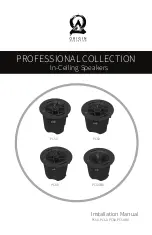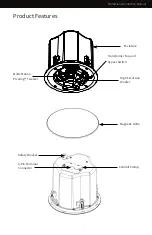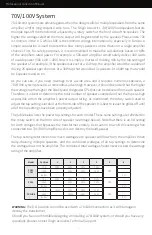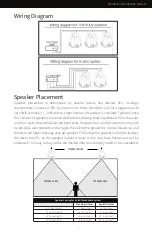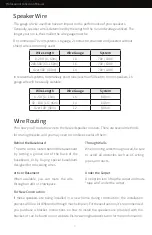
Professional Collection Manual
6
Speaker Wire
Plan how you’ll route the wire to the desired speaker location. There are several methods
for routing the wire, and you may need to combine several of them.
Wire Routing
One option is to lift up the carpet and route
“tape wire” under the carpet.
Under the Carpet
The wire can be routed behind the baseboard
by cutting a groove out of the back of the
baseboard, or by buying special baseboard
designed for concealing wires.
Behind the Baseboard
When available, you can route the wire
through an attic or crawlspace.
Attic or Basement
When running wires through a wall, be sure
to avoid all obstacles such as AC wiring,
pipes, and ducts.
Through Walls
If these speakers are being installed in a new home during construction, the installation
process will be a bit different (although much simpler). For these situations, it’s recommended
you purchase a bracket. Instructions on how to install the speakers are provided with the
bracket, or can be found on our website. Visit www.originacoustics.com for more information.
For New Construction
The gauge of wire used can have an impact on the performance of your speakers.
Generally, speaker wire is determined by the length of the run and wattage utilized. The
longer your run is, the smaller the wire gauge must be.
On commercial 70 volt systems, 18 gauge, 2 conductor, stranded and jacketed without
shield wire is commonly used.
In residential systems, for relatively short runs (less than 50 feet) to 8 ohm speakers, 16
gauge wire will be usually suitable.
Wire Length
Wire Gauge
System
0 - 50’ (0 - 15m)
16
8 Ohm
50 - 100’ (15 - 45m)
14
8 Ohm
Over 100’ (30m)
12
8 Ohm
Wire Length
Wire Gauge
System
0 -200’ (0 - 60m)
18
70V / 100V
200-500’ (60 -150m)
16
70V / 100V
Over 500’ (150m)
14
70V / 100V

